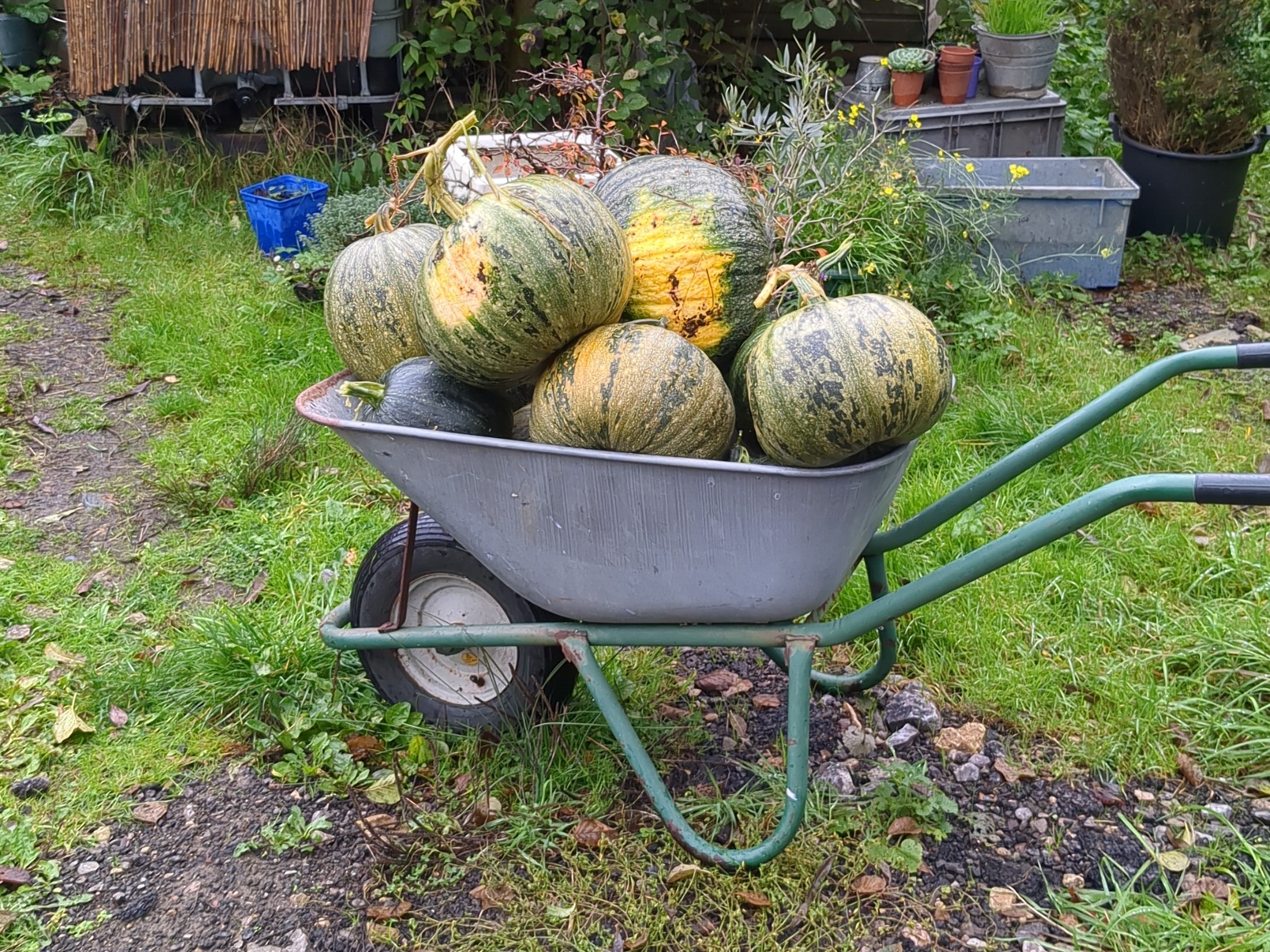So some annuals seem to do really well on the, often wet, levels. The peat acts as a big sponge and in dry summers leveller farmers benefit. Pumpkins were sown on the 8th June and did well despite the very dry summer and only being watered in the first week. Heavy hay mulching seem to do the trick.
The pumpkins grown, Olga – an eastern European variety, were chosen for their edible seeds as we are looking for crops that store well. They have good edible seeds, which unlike many pumpkins, don’t have hard, woody outer hulls. But also, unlike most grown purely for edible seed which have fibrous flesh considered good enough only for animal feed, Olga has perfectly edible flesh as well!
The plants suffered one unusually cold night mid September which killed most of their leaves. Warm weather for a few weeks after that saw a few start to throw out new leaves again but there wasnt time for a real recovery.
Despite that we got a surprisingly good crop. Each plant had a few heafty pumpkins. Some of the youngest hadn’t had time to thicken up their skins and the cold snap damaged them causing them to start rotting. The seed in them also hadnt had time to develop and wasnt very interesting.
Separating out the seeds by hand was a bit time consuming and this process is something we would like to work out how to better streamline.
The seeds in the more mature pumpkins were fat and delicious and we were still eating them 5 months later.

